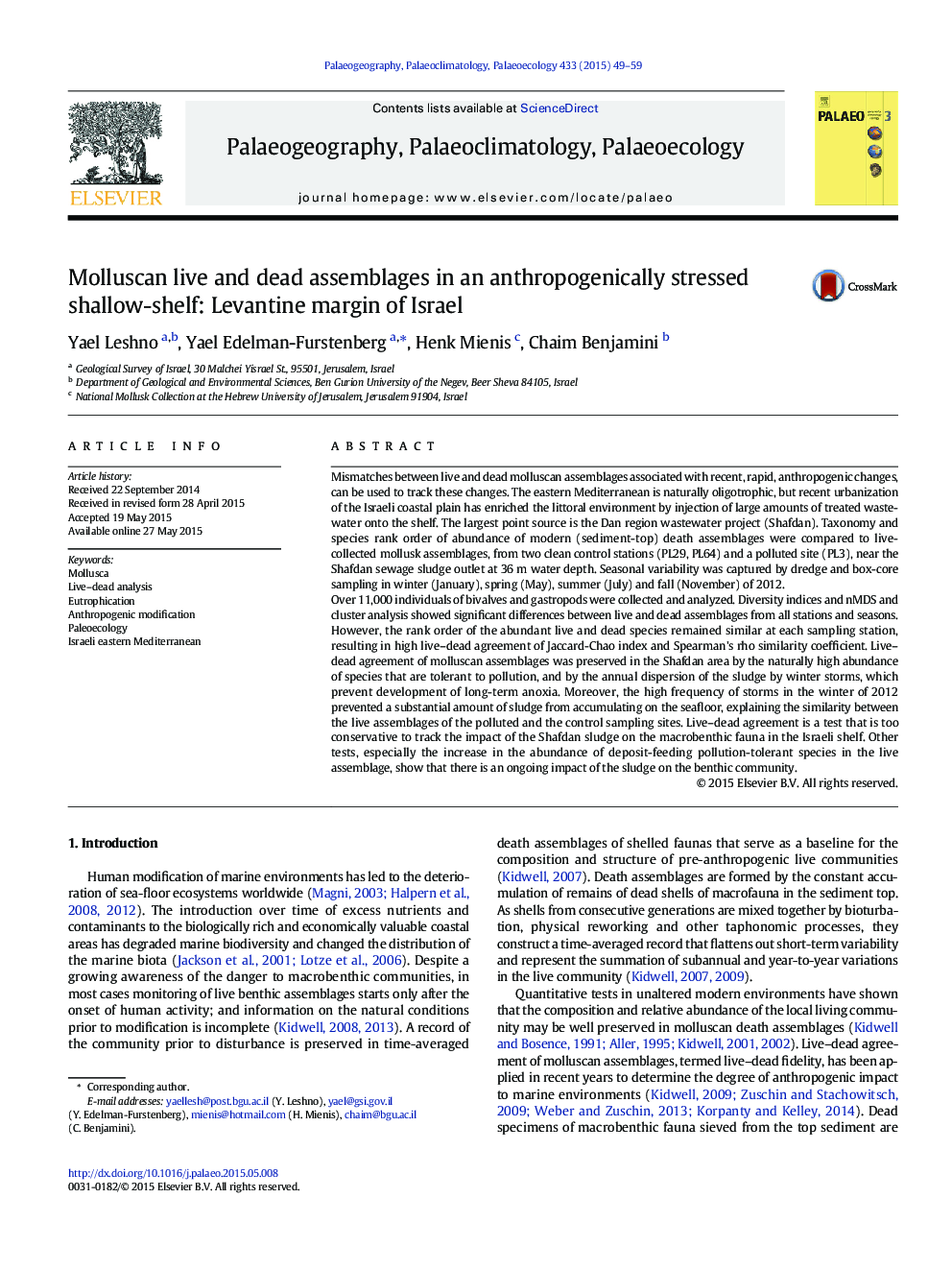| Article ID | Journal | Published Year | Pages | File Type |
|---|---|---|---|---|
| 4465917 | Palaeogeography, Palaeoclimatology, Palaeoecology | 2015 | 11 Pages |
•Live–dead fidelity of mollusca was tested from a polluted and two control sites.•Statistical analyses show significant difference between live and dead assemblages.•Species composition and rank order between live–dead assemblages remained constant.•Annual sludge removal and pollution tolerant species preserved live–dead fidelity.•Eutrophication variations can be tracked by molluscan trophic levels.
Mismatches between live and dead molluscan assemblages associated with recent, rapid, anthropogenic changes, can be used to track these changes. The eastern Mediterranean is naturally oligotrophic, but recent urbanization of the Israeli coastal plain has enriched the littoral environment by injection of large amounts of treated wastewater onto the shelf. The largest point source is the Dan region wastewater project (Shafdan). Taxonomy and species rank order of abundance of modern (sediment-top) death assemblages were compared to live-collected mollusk assemblages, from two clean control stations (PL29, PL64) and a polluted site (PL3), near the Shafdan sewage sludge outlet at 36 m water depth. Seasonal variability was captured by dredge and box-core sampling in winter (January), spring (May), summer (July) and fall (November) of 2012.Over 11,000 individuals of bivalves and gastropods were collected and analyzed. Diversity indices and nMDS and cluster analysis showed significant differences between live and dead assemblages from all stations and seasons. However, the rank order of the abundant live and dead species remained similar at each sampling station, resulting in high live–dead agreement of Jaccard-Chao index and Spearman's rho similarity coefficient. Live–dead agreement of molluscan assemblages was preserved in the Shafdan area by the naturally high abundance of species that are tolerant to pollution, and by the annual dispersion of the sludge by winter storms, which prevent development of long-term anoxia. Moreover, the high frequency of storms in the winter of 2012 prevented a substantial amount of sludge from accumulating on the seafloor, explaining the similarity between the live assemblages of the polluted and the control sampling sites. Live–dead agreement is a test that is too conservative to track the impact of the Shafdan sludge on the macrobenthic fauna in the Israeli shelf. Other tests, especially the increase in the abundance of deposit-feeding pollution-tolerant species in the live assemblage, show that there is an ongoing impact of the sludge on the benthic community.
